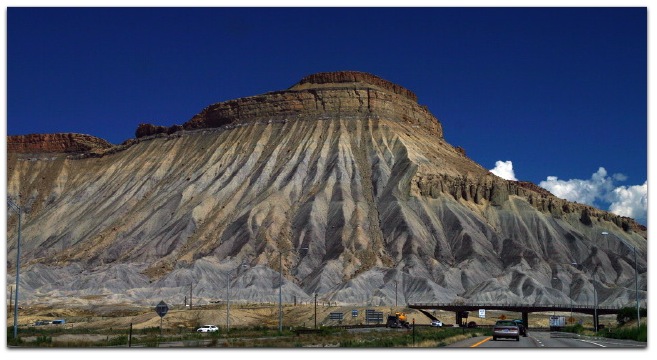A few dozen million years ago, in the Eocene — not far back, as geology goes — a large lake covered much of what’s now western Colorado and eastern Utah. A lot of organic muck fell to the bottom, and now that muck is oil. Problem is, it’s locked in shale, and extracting it is no bargain… yet.
If and when it ever gets to be a bargain, look to see some of The West’s prettiest landscape ripped up.
Edge-on, the old lake bed presents itself as the Book Cliffs*, which overlook I-70 for a hundred miles. I took some shots of the region when we drove past them last year. And one of those shots now illustrates this post by Brandon Keim in his Wired blog.
[* My geography and my geology were corrected below in the comments by Ron Schott, a genuine geologist. Brandon Keim wrote about oil shales using my photo. There are oil shales, but not in these Book Cliffs deposits, which are older. The oil shales are in strata above the ones exposed here. Apologies for the errors.]
What we’re presented with here is a set of costs that can only be rationalized in terms that regard the extraction of all the world’s oil as an economic necessity — and nothing else.
I hear arguments for mining oil from places like this and a few memorable lines from the Doors’ “When the music’s over” come to mind:
What have they done to the Earth?
What have they done to our fair sister?
Ravaged and plundered and ripped her and bit her.
Stuck her with knives in the
Side of the dawn and
Tied her with fences and
Dragged her down.
Great song, by the way. Also the one that foreshadowed the demise of Tony Soprano on the penultimate episode of Tony’s show.
Is there foreshadowing here too?

Leave a Reply